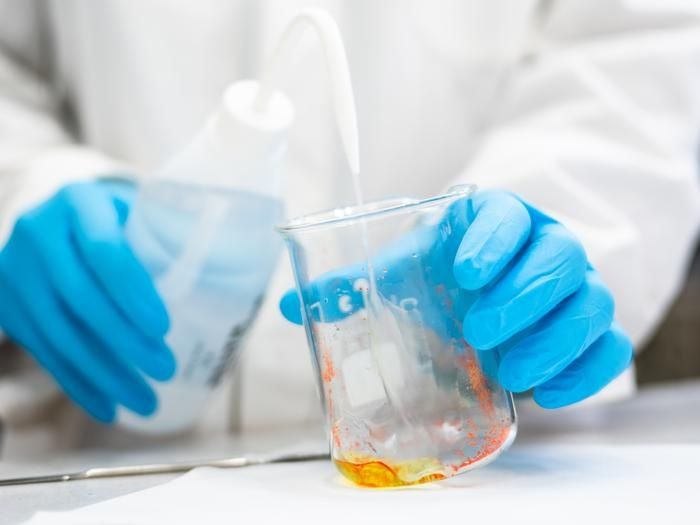For the first time, scientists have been able to produce gold foil that is only one atomic layer thick. The material was referred to as “golden”. According to researchers at Linköping University in Sweden, this gave gold new properties that could make it suitable for applications such as carbon dioxide conversion, hydrogen production, and the production of high-value-added chemicals. Your results will be published in the journal Synthesis of nature published.
For the first time, scientists have succeeded in producing sheets of gold that are only one atomic layer thick.
Olof Planthaber
Scientists have long tried to create single-atomic sheets of gold, but have failed because of the metal's tendency to clump together. Researchers at Linköping University have now achieved this thanks to a hundred-year-old method used by Japanese blacksmiths.
“When you make a material very thin, something unusual happens – as is the case with graphene. The same thing happens with gold. As you know, gold is usually a metal, but when it is only one atom thick, gold can become a semiconductor instead,” he says. Shun Kashiwaya, researcher at the Department of Materials Design at Linköping University.
To manufacture the gold, the researchers used a 3D base material in which the gold is embedded between layers of titanium and carbon. However, developing Goldene proved to be a challenge. According to Lars Holtmann, professor of thin-film physics at Linköping University, part of the progress is due to chance.
“We had completely different applications in mind when developing the base material. We started with an electrically conductive ceramic called titanium silicon carbide, where the silicon is in thin layers. The idea was then to coat the material with gold to create a connection. But when we exposed the component to high temperature “The silicon layer inside the base material has been replaced with gold,” says Lars Holtmann.
This phenomenon is called intercalation, and what the researchers discovered was gold and titanium carbide. Researchers have been getting gold and titanium carbide for several years without knowing how to melt or wash the gold, so to speak.
By chance, Lars Holtmann stumbled upon a method that had been used in Japanese blacksmithing for more than a hundred years. It's called Murakami's reagent, which removes carbon residue and changes the color of steel, for example when making knives. However, it was not possible to use the exact same recipe as the blacksmith. Shun Kashiwaya had to look for modifications:
“I tried different concentrations of Murakami's reagent and different etching time periods. A day, a week, a month, several months. We found that the lower the concentration and longer the etching time, the better the etching worked. But it still wasn't enough,” he says.
Engraving must also be done in the dark, as the reaction under the influence of light produces cyanide, which dissolves the gold. The final step was to make the gold sheets strong. To prevent the exposed 2D sheets from warping, a surfactant was added. In this case, there is a long molecule that separates the sheets and stabilizes them, i.e. a surfactant.
“The gold flakes are placed in a solution a bit like corn flakes in milk,” says Sean. “Using a sort of ‘sieve’ we can collect the gold and examine it with an electron microscope to make sure we have succeeded. And we did.” Kashiwaya.
The new properties of gold are due to the fact that gold has dangling bonds when it is two-dimensional. Thanks to this, future applications could include carbon dioxide conversion, catalysis for hydrogen production, selective production of high value-added chemicals, hydrogen production, water purification, communications, and much more. Additionally, the amount of gold used in applications today could be significantly reduced.
In the next step, the LiU researchers want to verify whether this is also possible with other precious metals and identify further future applications.

“Social media evangelist. Baconaholic. Devoted reader. Twitter scholar. Avid coffee trailblazer.”







More Stories
A quantum computer in a built-in cabinet
Nintendo: One swipe kills 8,535 emulators
GTA Online: Big rewards in open wheel racing, RC racing, and more